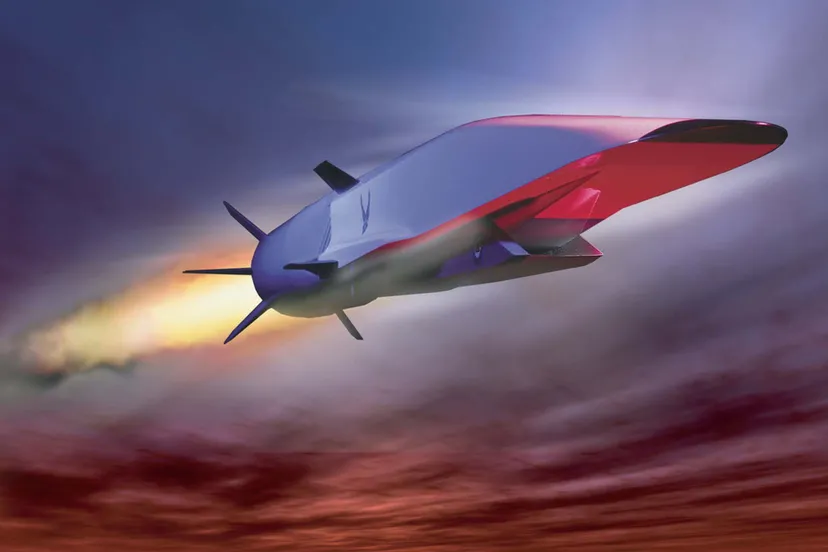The ramjet engine can also burn things like metal powders.
The X-51 Waverider reaches the Mach 5,1. That speed is low enough that the ramjet can operate. And the ramjet engine can use almost any fuel that the system can inject into it.
The only thing that developers must do to remove carbon from exhaust gas is to use some fuel that doesn't involve carbon. And modern nanotechnology makes it possible to create things like nano-metal powders that can be used as fuel.
When we think about inventions like the carbon-burning ramjet-driven P.13 experimental project, we must realize that those inventions can drive aviation to a new level. P.13 used carbon dust that it injected into the ramjet engine. The plane was too radical to operate even in Nazi Germany. That radical ramjet design can turn aviation closer to carbon-free time. Modern nanotechnology allows developers to create things like metallic powders.
The ramjet engine can use fuels like aluminum-magnesium-combination particles. The system drives those nanoparticles into the ramjet engine. That powder can give very high temperatures. Water injection into the chamber might needed to keep the temperature lower. The system can use a low-pressure tube to pull air through the engine. The system can ignite metal by using the hydrogen.
 |
| Convair NB-36H |
The nuclear age.
In some futuristic models, the nuclear-powered shuttles can transport people even to Mars. In history, one nuclear-powered NB-36 H experimental bomber flew research missions to test how nuclear reactors for aviation. Those nuclear-powered aircraft never went to service, because of public opinion. If a nuclear-powered aircraft falls, that can cause heavy radioactive pollution in large areas.
The Nuclear-powered aircraft or shuttle can use electric jet engines there the electric arcs or electromagnetic radiation makes the expansion of the air. In some models the system can use phonon there it injects energy. The phonon will send pressure impulses that make pressure into the ramjet or turbojet.
The engine system can turn to use nuclear chemical rockets in space. These types of shuttles are possible, but there are also safety options that make them hard to make
Return of Orion.
The use of nuclear bombs as the propellant for interplanetary spacecraft is not a new idea. In the 1950's the USAF made a study project called "Orion". The idea was to make a spacecraft that used nuclear bombs to accelerate spacecraft. The system would detonate nuclear bombs behind it. There is introduced a plan to create the airfield operating shuttle that uses a series of neutron bombs to make the project Orion real. The system can use the collapsible shield that protects craft against the nuclear detonators radiation.
The large-size nuclear-powered aircraft can travel even to Mars if they have suitable engines and enough fuel. The nuclear reactors can hide in the winds of those planes. That gives them lots of surface area to keep the temperature low. In space large structures developed for solar sails can also operate as the cooling system. That conducts thermal radiation into space. The developers can use solar-sail technology to make shields that the craft can open in space.
Those systems can be used to protect the craft against solar storms. And they are useful to use with neutron bombs. In some scenarios, the shuttle that travels to Mars can use nuclear bombs to send it to the Mars trajectory. The system can send a nuclear bomb behind it. And detonate it behind the craft. This kind of shuttle can carry those bombs in its cargo bay. It can travel to an orbiter where it opens the shield and detonates the bomb.
The nuclear rockets.
The Success of Space X's Starship is one of the milestones in space flight. Things like nuclear rockets need a high-capable, heavy-weight launching system. The nuclear rockets might not lift off from Earth using nuclear power. In many scenarios, the rocket lifts off from Earth using conventional rockets. Then at the orbiter, the system starts to use nuclear power. Or maybe the system looks a little bit different than we even thought.
In many scenarios, the interplanetary shuttles that use nuclear power wait at the Moon orbiter. In the case of accidents, the nuclear debris falls to the Moon. The crew will be transported from the Earth to the Moon orbiter using conventional rockets. Then there the crew will change its craft. To the nuclear-powered rockets that use liquid hydrogen as propellant.
The nuclear-powered chemical rockets require small and effective nuclear reactors. The small, portable nuclear reactors, PoNus are tools that can make this kind of system possible. But in all cases, there must be a trusted launching system. That transports the reactor into the orbiter. Then the crew must transport nuclear fuel into those rockets. The problem is that if there is an accident, the radioactive fuel will spread all around. The developers must transport that fuel to the orbiter as a small lot as possible.
The chemical nuclear rocket can drive liquid hydrogen straight through the reactor. That model was used in "Project NERVA". The Nuclear Engine for Rocket Vehicle Application, NERVA was the primitive chemical nuclear engine. Developers can use things like microwaves lasers and electric arcs to expand the fuel. In those cases, the system takes electricity from the nuclear reactor's cooling cycle. The system can use things like molten salt that it drives through the generator.
https://hushkit.net/2019/03/29/the-lippisch-p-13-supersonic-wonder-plane-or-nazi-coke-head-an-assessment-by-former-british-technical-liaison/
https://scitechdaily.com/fast-track-to-mars-nasas-nuclear-rockets-cut-travel-time-in-half/
https://www.theverge.com/2013/5/4/4298270/x-51a-waverider-hypersonic-missile-successfully-hits-mach-5-1-in
https://en.wikipedia.org/wiki/Convair_NB-36H
https://en.wikipedia.org/wiki/Lippisch_P.13a
https://en.wikipedia.org/wiki/NERVA
https://en.wikipedia.org/wiki/Project_Orion_(nuclear_propulsion)





No comments:
Post a Comment
Note: Only a member of this blog may post a comment.